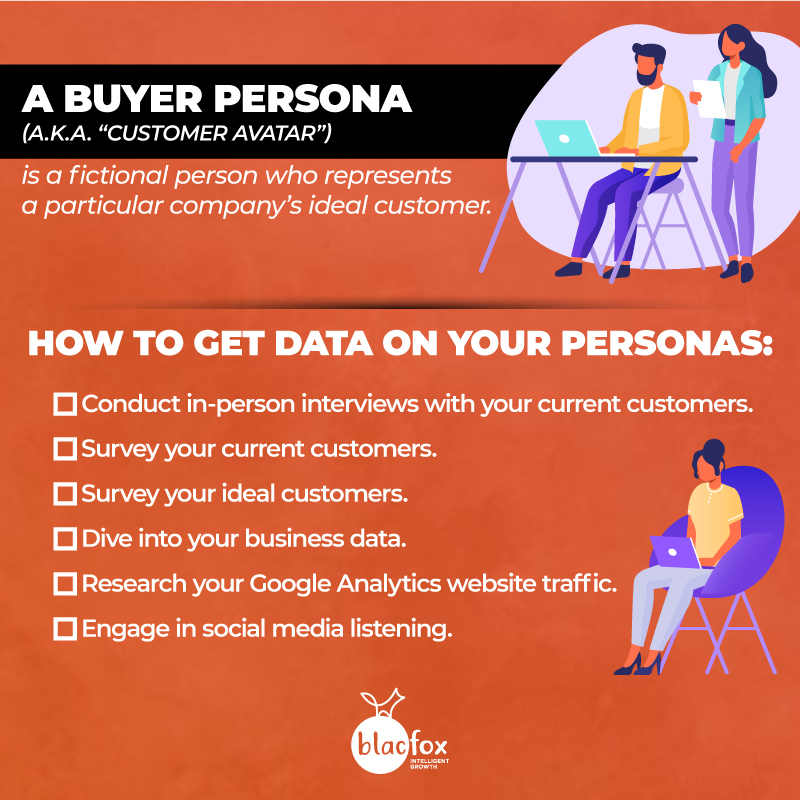
As marketers, who must you be talking to?
To create generic content to a general audience just doesn’t cut it anymore. The days of keyword stuffed, SEO-focused content is over. No more unhelpful emails; no more clickbait blogs; and no more shallow social media posts. These days, the average user sees right through such attempts at marketing, because they come off as weak and effortless. Thus, to stand out, one must have robust content specifically catered for specific people.
Address User Problems
In the top of the sales funnel layer (or ToFu for short), the content is created with the main purpose of educating prospects. If you focus on selling, then you will most likely end up turning new prospects away. It should be a symbiotic relationship where you, as the business, are not specifically making use of them for a sale; in addition to the product you are providing, you should still be compensating customers in the marketing stage as well.
-
What would your biggest pain points be?
-
What would interest you the most?
-
How can these problems be solved?
-
How effective will these solutions be?
The answers to the above questions will provide you with a strong base to create the appropriate ToFu content for your prospects.
Meet User Queries
Although meeting user queries may seem obvious step to most, many businesses still underestimate customer research. It is important to know exactly what your prospects require and desire through the proper research and not to make decisions based purely off of intuition
.So invest time and focus into primary research instead of basing everything purely off of assumption. This will not only provide you with a more effective understanding of your target market, but it will give you a helpful push past competitors that don’t research their customers.
Here are three useful ways to go about this process.
1. Customer Interaction Teams
Probably the simplest and one of the most effective ways to go about gathering information on your customer base would be to interview your business’s internal customer interaction staff (i.e. customer support).
Discuss matters with the teams that have the most experience when it comes to dealing with customers. And they most likely already have the key customer insights gathered, so it is definitely the best place to begin.
3 ways to conduct employee interviews:
-
Host one-one meetings with members of your customer service staff,
-
Create a database dump where staff members will be able to input customer problems whenever encountered and related information,
-
Provide questions and surveys that will find the customer pain points from the staff in a simple manner.
2. Go Straight to the Customers
The next best thing (or rather the actual best thing) after interviewing your staff would be to move directly to the source, which is your customer base.
But getting information from your customers is normally a lot easier said than done. And to efficiently and effectively get proper answers from them will require more work than it would with your own staff. But it’s a necessary step!
So here are 4 ways to get information from your customers:
-
Like most things, designing a plan or strategy will make the work a lot easier. So carefully plan out the process and find out which questions will be most necessary (and remember no to ask too many questions, because customers are lazy and easily overwhelmed!),
-
Create a simple poll or survey and send it out to a large number of customers from your customer list,
-
If possible, hold live a interview (again in exchange for the customer’s benefits) and try to get deeper insights from your customers. Find out about their pain points, their jobs and job roles, their title, day-to-day life, their struggles and workplace challenges, tools and resources that they use, etc.
-
Write an email or publish a social post that offers customers some kind of reward (i.e. discounts, gift cards, vouchers, etc.) if they are willing to answer your questions.
3. Research and Content Tools
Besides your staff and customer base, you can also make use of content tools to discover key customer pain points automatically.
These tools are extremely useful as they provide your team with secondary information relating to your customers. Although it isn’t your customers’ direct responses, such tools are useful resources nevertheless.
Creating Buyer Personas
Once you have gathered your customers’ pain points, you can then combine and organize them into buyer personas that can be used to create specific content and strategies in the future.
And to emphasize the significance of buyer personas, we’ve gathered a number of useful stats from Cintell’s 2016 Benchmark Study that might convince you of the necessity of personas:
-
71% of companies who exceed revenue and lead goals have documented Personas,
-
65% of companies who exceed lead and revenue goals have updated their Personas within the last 6 months,
-
Persona based content increased customer engagement almost six-fold when targeting cold leads (10% versus 58%),
-
It is more effective to target cold leads with Persona based content than targeting warm leads without using Persona based content (58% versus 45%).

How to Create a Buyer Persona
Section 1: Who?
Section 2: What?
Section 3: How?
Last but not least is the marketing message you want to use for a particular prospect. And in this message, you must decide what you are advertising and how to effectively get your offer across.


